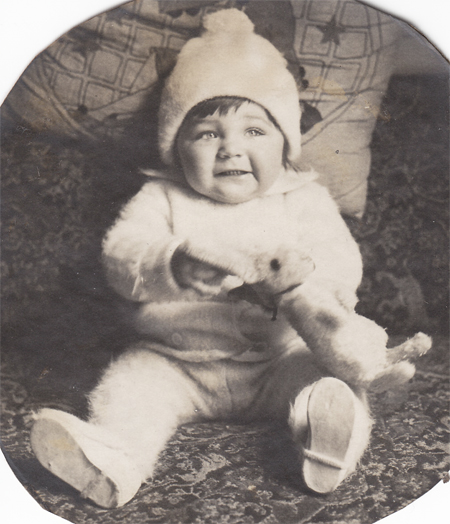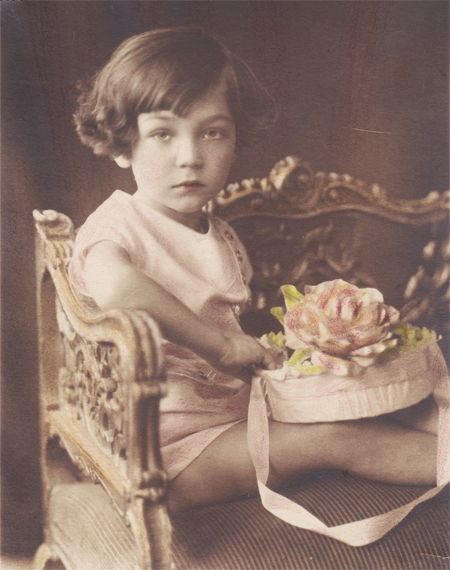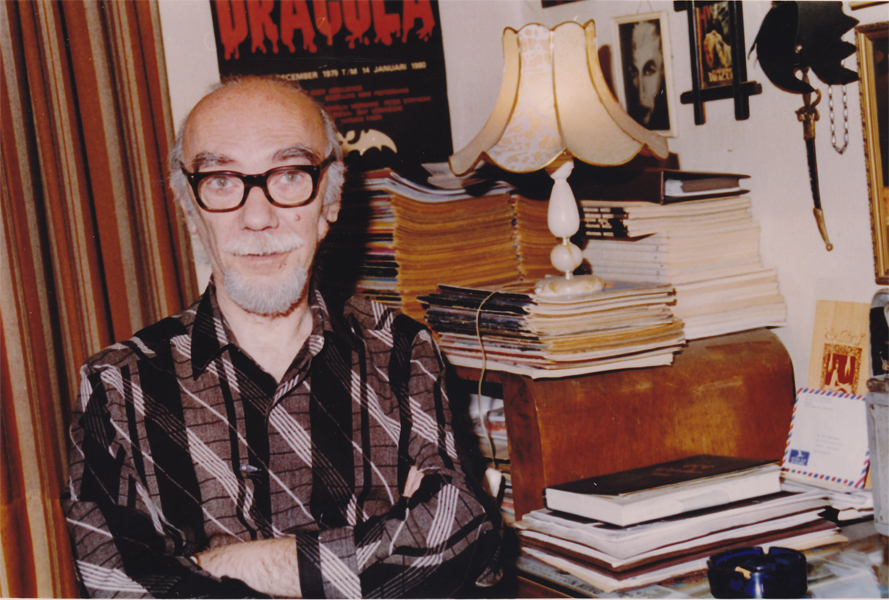This
veteran film buff and lover of the ‘Beyoğlu life’ has not kept
family records but his mother did. After her death, going through her
personal papers, an envelope labelled ‘documents’ came to light, and
they contained the following. A 1924 dated document issued by the Greek
consulate in Istanbul, written partly in Greek partly in Ottoman script,
with a photo of his 1860 born grand-mother Maria Anna Filipucci. However
he doesn’t know of its content as he cannot decipher these languages.
Another document, issued by the Spanish consulate in Istanbul in 1917,
details information on Mr Scognamillo maternal uncle, Jean Filipucci
(name in Greek version), who was a 20 year old student at the time.
It is interesting to note that during the time of WWI, neutral Spain
was responsible for the protection of the Greek residents of the city.
Death certificate issued by the Greek Baloukli hospital for his grandfather
George Filipucci in 1919. Grave plot purchase agreement in the Latin
Catholic cemetery of Feriköy, for his grandmother Paolina Scognamillo
in 1910. Black bordered death announcement of grandfather Gennaro Scognamillo
in 1910, including names of relations, most of which are unknown to
Mr Scognamillo, from Napoli and Izmir. A document issued by the Royal
Italian consulate given to his parents in 1936, inviting his parents
to the Italian club. From the paper it is clear that the invitation
was in response to his parents donating their golden wedding rings for
the upcoming victory (in Abyssinia) replaced by iron rings blessed by
Mussolini. His mother was not keen on this swap, but his father was
fascist leaning. Mr Scognamillo remembers attending the ceremony in
the crowded hall of Casa d’Italia as he was the junior member of the
party!
Mr Scognamillo was born in Şişli, Istanbul in 1929, the son
(only child) of Elisabetta Filipucci, and Leone Scognamillo. Mother
is an Istanbul born Greek whose roots are in the Aegean island of Tenos,
and father is again Istanbul born but origins from Naples. The first
7 years of his life were spent in Asmalımescit street in Beyoğlu,
a traditional built house that no longer stands.
Mr Scognamillo, by publishing this book and later interviews has allowed
the general puplic to have a better understanding of who the Levantines
are and celebrates his family’s heritage interwoven with his film and
Beyoğlu nostalgia, with this work. The book is full of vignettes
of a life much changed now, such as the last Greek carnival staged in
the district of Feriköy, to which he went with his father.
Note: The above passage is a summary taken
from chapter 1 of his book ‘Bir
Levantenin Beyoğlu anıları’ – [The Pera
memories of a Levantine], first published in 1991, and republished in
expanded form in 2002 by Bilge Karınca yayınları, Istanbul.
For extra insights, there follows a translation of an interview done
with Mr Scognamillo in 2003 by a university student, Volkan Ecer, previously
available on the web, in Turkish.
Can you tell the story behind you living in Istanbul?
My grandfather who was a chef, came to Istanbul from Naples mid 19th
century. His first job was as a labourer on the construction of Haydarpaşa
breakwater, and later was able to return to his profession. So I’m a
third generation immigrant.
Can you explain what is a Levantine?
A Levantine is a westerner who lives in the east. In the past there
were many Levantines living in Istanbul, Iskenderun and Izmir. The majority
were Italians, but there were also French, British and Germans, all
of whom shared the characteristic of living for a few generations in
Turkey. Currently the numbers are very low, and the new generation have
mostly preferred returning to their ancestral homelands. I have two
children, they both live abroad.
Have you ever thought of leaving Istanbul?
From time to time I felt the need to leave. But if a person spends his
life in a place, he becomes integrated there. The critical thing is
to achieve that integration. Some times I challenge other Levantines,
‘look I’m integrated, and you’re not’, they get offended of course.
I was a witness to the 6-7 September events when I was on Istiklal Street.
I was affected by the situation, but I never thought of leaving Istanbul
because of such events in Turkey, because they did not directly affect
me or other Levantines.
Why do you think Levantines coming from the developed west, chose to
live in the less favourable east?
Istanbul and the east have many attractions. This is not solely an impression
of my generation or generations before me. There are many young foreign
students who are struck by Istanbul. Istanbul still retains that attraction.
Because we live in Istanbul, with all its good and bad points, we might
ponder on how others are attracted to it. But they might have a different
perspective, such as the chaos of Istanbul as opposed to the order in
Europe, may be the source of this evocation. Europeans, in comparison
to the hustle and bustle here, have relatively monotonous lives, and
some compare this frantic Istanbul to New York.
Do you think a source of this attraction could be the mystic nature
of Istanbul?
Of course, could be, in some areas the old and the new go head to head.
For example, the tourists love Sultanahmet square. There you’re both
in a modern setting and yet history is all around you. Naturally this
is not unique to Istanbul, similar admixtures exist in Rome, Paris and
London. However Istanbul has the orientalist element, squeezed between
east and west, and that has an inherent attraction. A street I may pass
frequently, could be a different world to a visitor. Sometimes I think,
what would Istanbul be like without the Bosphorus.
If we went on a city tour with you, what would you consider to
be the most attractive area?
It could be Sultanahmet and surroundings as it encapsulates the history
of Istanbul. For natural beauty, the Bosphorus and Prince’s islands,
and because it’s my neighbourhood, Beyoglu.
What are the differences in Beyoğlu
between your youth and now? How do you reflect on nostalgia?
Not only Beyoğlu, all of Istanbul has changed. I’m not a nostalgic
person, the past is in the past, we need to live in the present. It’s
only natural for Beyoğlu to change, as it was too much of a special
place. Particularly during the Ottoman times, the neighbourhood was
a historical contradiction within Istanbul. Like a piece of Europe broken
away and inserted. If you look at the impressions of 18th
and 19th century western writers, they don’t consider Beyoğlu
to be western. But within Istanbul the quarter was a different world.
The artists and intellectuals of Istanbul were always drawn to Beyoğlu,
as it provided a range of outlets not found elsewhere in the city. During
the 18th and 19th century all things western would
enter Istanbul through Beyoğlu. But the social foundation of Beyoğlu,
the minorities and Levantines are now disappearing. Various political
and economic factors has caused emigration, such as the foundation of
the state of Israel. All these have had a negative impact on Beyoğlu
and Istanbul.
Are there any of the minority shop keepers left in Beyoğlu?
None left. In the past virtually all traders in clothing or entertainment
establishments, belonged to minorities. For example, when someone said
a pub [meyhane], it meant a Greek pub.
Could Beyoğlu be considered the spoilt child of Istanbul’s
culture and art centres?
Beyoğlu has more entertainment centres than elsewhere in Istanbul,
so this depiction is correct.
Could you talk a bit about your book, ‘the mysteries of Istanbul’?
To be frank, that book is still a nuisance to me. I rewrote the book
in Italian and it was published in Italy. I have a strange nature, once
I have finished a book, that book for me is then dead. I don’t read
my books once they have been published, the important thing is the next
book.
What do you think for the future of Istanbul?
That’s a wide subject as it is linked to the future of Turkey. Unfortunately
because Istanbul has grown in a disorganised way, rearranging it would
be very difficult. There are still many problems and I have no solutions.
Considering the other fine cities of the world such as Prague, Paris
and London, where do you think Istanbul would fit?
It’s as important as those cities. There is a culture founded by Byzantines,
linking Romans, Greeks, a whole world. Added to this are the Ottomans
and even Jews from Spain. For this it is difficult to research history
in Turkey as we don’t reach the sources, as we live within them. The
Ottoman archives are not studied sufficiently. For example on the subject
of Beyoğlu and Levantines, only last year I came across four foreign
researchers, some doing PhD thesis. I don’t know if there are any locals
who have done work on this subject. One Levantine academic did work
on the Levantine past of Pangaltı, which was published by the Şişli
council. I find it strange that all this is done by outsiders; these
should have been done by our people living in Istanbul.
Considering the social life, how were the relations between Levantines,
minorities and Turks?
There was never animosity between the communities. The evil every time
is religious or political intolerance. For example if it were not for
the Cyprus events, most of the Greeks of Istanbul would not have emigrated.
Societies always find communality for harmony. When I was a child Moslems
would participate in Easter and Christmas celebrations. Likewise minorities
and foreigners would join in Ramadan and Kurban [sacrifice] feasts.
It’s the politicians who have ruined the atmosphere of tolerance and
peace.
Our elders tell us that in the past everybody would be attired in
tie and starched collars in Beyoğlu, is this true?
We need to also consider the factor of fashion. Until the end of WWII,
normal dress was a suit. I remember when I was at high school, there
was a famous clothing store by the name of Mayer. One day wandering
with my friend, I saw some casual trousers, liked and bought them. But
late we thought we couldn’t wear these in Beyoğlu. In those days,
casual trousers were considered outlandish, but of course now everybody
has chosen to wear comfortable articles.
Have you ever thought of living in any city apart from Istanbul?
I considered it for a while, then gave it up. While I was working in
London, I considered settling there, but nostalgia for Istanbul won
out. With my age [74] I cannot leave the city now.
How many Levantines are left in Istanbul today, can you give numbers?
They have dwindled significantly. As Italians a thousand at the most,
in the 1950s this number was around 6,000. I do not count foreign visitors
here for work in these.
Finally can you give an anecdote relating to the history of Istanbul?
A popular one goes, when Fatih [The Sultan Mehmet II, the conqueror
who took the city in 1453] just after his victory entered the Hagia
Sophia, there was a service going on. Of course, when the Ottomans entered,
there was pandemonium. The priests conducting the service enter a wall
and disappear. According to the legend, when the city is recaptured
by the Byzantines, they will re-emerge from the wall to resume the service.
The 3 ages of Giovanni Scognamillo
Notes: 1- Mr. Scognamillo has written
an impressive number of books, all in Turkish, on the subject of Turkish
cinema history (first one published 1974) as well as the history of
his neighbourhood of Beyoğlu. Soon (2005) his latest, ‘Beyoğlu
Writings’, is going to appear in Turkish, a collection, once again,
of writings on Beyoğlu. Also recently (June 2005), a student of
communications at Marmara University, Ebubekir Çetinkaya, has
undertaken to create a documentary
film on the life of Giovanni and the neighbourhood with which he
is often associated, Beyoğlu. He has also starred in a number of minor roles in Turkish movies:
Online articles: Istanbul’s last Levantine misses the old Beyoğlu:
Through the eyes of a Levantine Pera - Rıza Kıraç
2- Text of an interview of Giovanni by Alberto Tetta, 2010.
3- View Giovanni’s sitting room / study arranged in a Flash panaroma programme with clickable information:
4- Unfortunately Mr Scognamillo died after an illness on 8th October 2016, may he rest in peace - obituary:

|




![]()